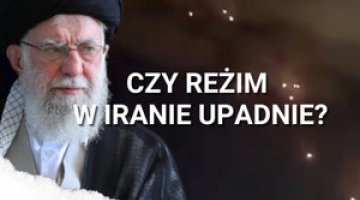Israel–Hezbollah: the state of the conflict and the outlook
Since 8 October 2023, in parallel to the war in the Gaza Strip, a confrontation has been ongoing between Israel and the Lebanese Hezbollah, which is a pro-Iranian Shia political and military group. It has taken the form of mutual attacks, which were initiated by Hezbollah, using artillery, rockets, drones and other means. Most of these are concentrated along the border, which also encompasses the Israeli-occupied Golan Heights. Although the confrontation has been continuous, so far it has not transformed into a full-scale war. However, there have been several isolated instances of escalations (for example in the form of attacks on targets of greater importance or those which are located further into enemy territory), and these have increased over time. At present, the Israel Defence Forces (IDF) are shaping the dynamics of the situation, as they have gradually moved from reaction to offensive action.
Thus far, in the exchanges of fire 44 civilians and around 280 fighters have been killed on the Lebanese side, and six civilians and 14 soldiers (including a brigade commander) have been killed on the Israeli side. The smaller number of fatalities on the Israeli side is due to the efficient performance of the air defences, among other things. The forced evacuation of the civilian population involving tens of thousands of individuals on both sides of the border has been a side effect of this confrontation.
Commentary
- Although Hezbollah has been represented in the Lebanese parliament and government structures, it remains beyond the control of the central-level authorities (in particular in the situation of a protracted state crisis to which it itself has significantly contributed). It forms the key element of the regional pro-Iranian axis which also includes the authorities in Damascus, Shia groups operating in Iraq and the Yemeni Houthi movement. Hezbollah would not have achieved its present political and military position, had it not received permanent support from Iran. The group’s actions should mainly be viewed in the context of Iran’s long-term policy of encircling Israel and challenging US influence in the region (which Tehran views as its ‘forward defence’). At the same time, despite its organic links with Iran, Hezbollah is an autonomous organisation which, besides its ideology, is guided by its own interest and Lebanese internal political issues.
- Hezbollah’s force is estimated at 50,000–100,000 fighters (many of whom are in reserve) and at least 150,000 missiles and rockets of various types and ranges (including precision weapons). This potential places it among the strongest non-state actors globally. For Israel, it is not just an adversary which is much more serious than Hamas, whose attack came as a surprise to the authorities in Tel Aviv, but also, effectively, the main military threat aside from Iran. In this situation, a potential full-scale war would pose a major threat to the civilian population and infrastructure both on the Lebanese side and on the Israeli side, though certainly to a lesser degree.
- Although for Iran and its allies the Palestinian issue has been important ideological fuel, effectively it is just one element of the regional calculations. Following the 7 October attack, Hezbollah and the Houthi movement launched ‘solidarity’ assaults on Israel, which continue to the present day, although with varying intensity. Alongside this, the political signals which both Tehran and the secretary-general of Hezbollah Hassan Nasrallah have been sending since last October (including his public statements issued on 3 November 2023 and 3 January 2024) do not suggest any readiness to launch a full-scale confrontation, and the exchange of blows with Israel is most often carried out on the basis of the equivalence of the targets attacked. Thus, the moves of the pro-Iranian axis in recent months can be viewed as attempts to step up military pressure on Israel without crossing the threshold into full-scale war.
- The stance of the United States has been of key importance to preventing a regional armed confrontation after 7 October. The US has redeployed additional forces to the Middle East (including two carrier strike groups) and continuously signalled to the pro-Iranian bloc that any attack on Israel would trigger a US military response. However, alongside this, Washington has consistently dissuaded the Israeli leadership from launching a pre-emptive strike, so far successfully. This was particularly important immediately after 7 October, when it was unclear whether Hamas’s actions were an element of a more comprehensive attack coordinated by Tehran.
- Despite its limited nature and relatively small losses, the armed confrontation with Hezbollah is posing a serious problem to Israel, in particular a political one. Firstly, it is disorganising the life of the northern part of the country. Secondly, it is unclear when it may end. In the situation, when the war in Gaza has already lasted five months (which makes it Israel’s longest war since 1948–1949) and the Israeli state has not managed to achieve any of its political goals (return of hostages, Hamas’s defeat) despite the giant scale of damage inflicted, the prolonged exchange of blows with Hezbollah is adding to the feeling that Israel is facing a profound security crisis from which there is no easy way out.
- In these circumstances, several factors may emerge in Israel, which may prompt it to escalate the conflict. These are: a) the need to normalise the situation in the northern part of the country; b) the need to achieve a military and political success in the situation, when the war in Gaza has not resulted in any such success (and this will not change any time soon); c) the rapidly declining level of support for Prime Minister Benjamin Netanyahu and the awareness that the moment in which the fighting in Gaza ends will trigger a political stocktaking which will be unfavourable to him; d) the window of opportunity linked with enhanced US presence in the region, Washington’s profound political involvement on Israel’s side in the war with Hamas, and with US electoral season.
- Taking into account the power of bilateral relations and Israel’s importance to a significant portion of US establishment and electorate, should another conflict involving this country break out, the US would find it difficult to remain on the margin of such a war (regardless of Washington’s preferences). Effectively, this would involve further arms supplies, enhanced deterrence in the form of increased military presence in the region and the need to utilise US political capital to provide Israel with a diplomatic umbrella. All this could result in US resources getting scattered and the US getting drawn away from other conflicts. Alongside this, the progress of the war in Gaza so far has clearly demonstrated certain limitations in Washington’s ability to influence Israel’s actions. In the event of an escalation of the conflict with Hezbollah, the US could thus find itself in a situation, in which it would be shouldering the cost of this escalation without gaining a proportionate ability to influence the developments on the ground.





